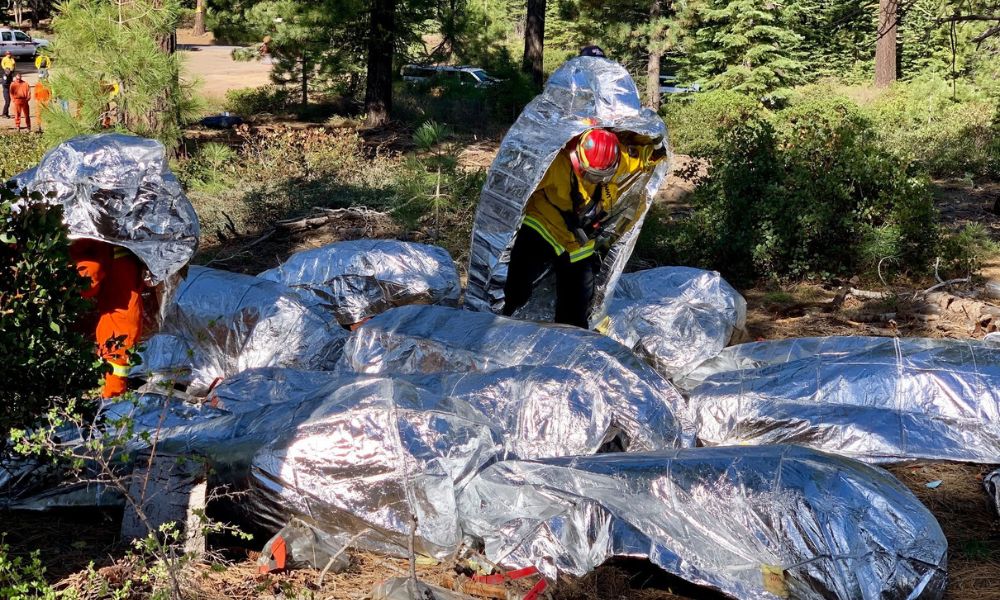
Wildland fires can kill, and not just the acres of land and wildlife they devastate. Wildland firefighters’ lives are constantly at risk, and at any second the tide can turn subjecting them to the flames, intense heat, smoke, and possible injury or death. Sometimes the fire can overtake them. In those instances, and as an absolute last resort, they rely on their portable emergency wildland fire shelters. Here’s a quick breakdown of the anatomy of an emergency wildland fire shelter and how it can save firefighters’ lives.
Material Issue
First, wildland fire shelters consist of several flame-resistant substances woven and stacked upon each other. The shiny external material is a combination of aluminum foil laminated with woven silica and fiberglass and an aluminum foil inside layer. Between each layer is an air gap, which gives the person inside even more protection. These shelters are lightweight and collapsible, and firefighters carry them in nylon carrying cases. Fire shelters come in two different sizes, which can accommodate most body types.
Fighting Off Fire
The shelters provide quick protection from oncoming flames and superheated air that can singe one’s lungs. Shelters can provide an 81 percent reduction in rising temperatures and help reduce heat flux by 97 percent. Heat flux measures how quickly heat transfers to a surface or through a material. Fire shelters also help contain breathable air for a short period while outside air temperatures rise.
Into the Flames
Part of wildland fire fighting training involves using practice shelters in preparation to use the real thing in an actual fire. Firefighters find a clear spot on the ground, hopefully free of excessive debris and foliage, and remove the shelter from the packaging. The firefighter then opens the shelter, lies down in it, threads their arms through the inner straps, and folds their arms against their chest, keeping some space between their body and the sides of the shelter. Rolling over, the firefighter stays as close to the ground as possible.
Proper Protection
As shown, the anatomy of an emergency wildland fire shelter provides a layer of protection for firefighters, but only for a short time. Under sustained temperatures of 500 degrees or more, the adhesive used to bond the layers breaks down, causing the foil to tear and eliminating the protection it offers against the flames and heat. It’s crucial firefighters train in proper deployment of the fire shelter to ensure the maximum amount of protection for as long as possible.
